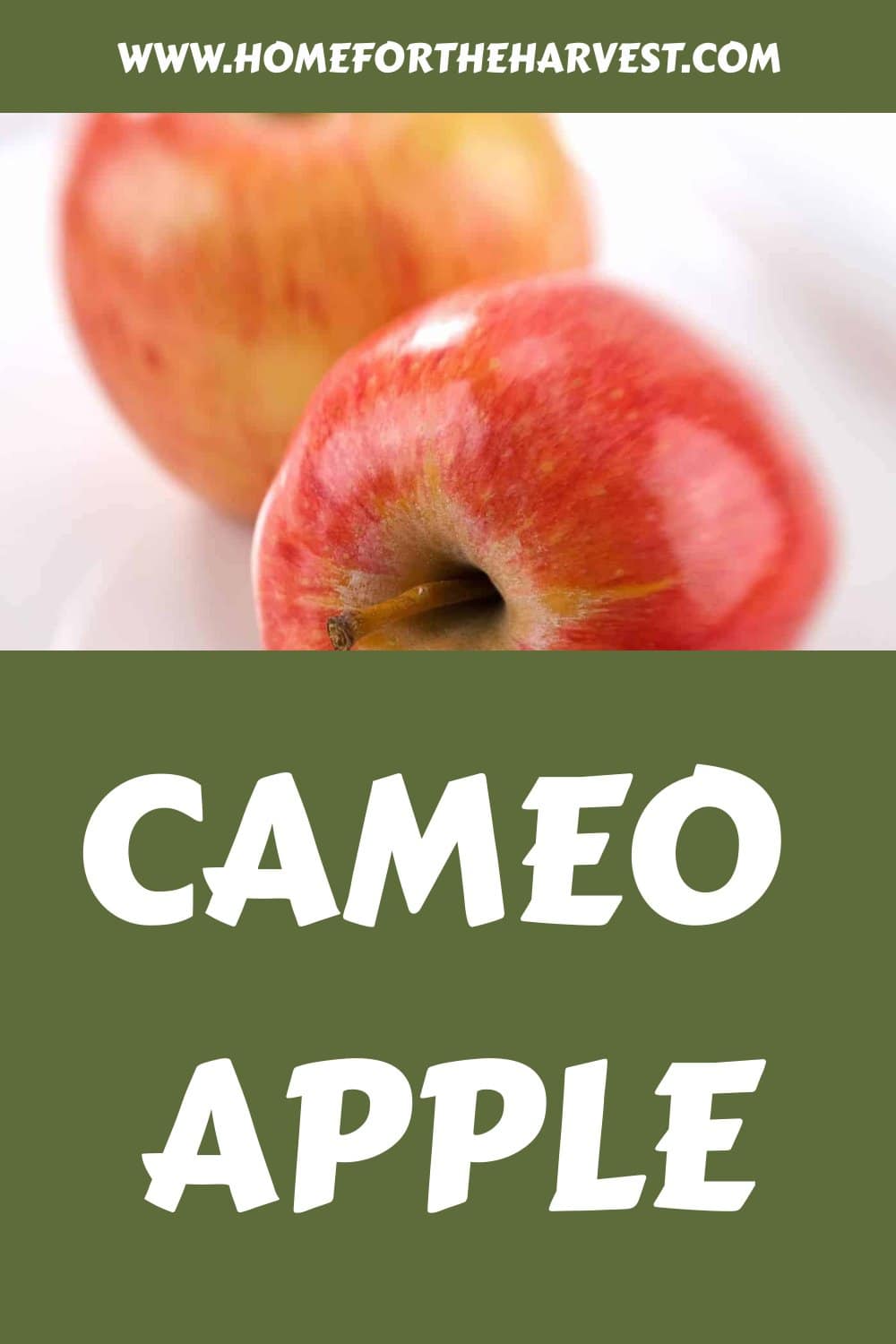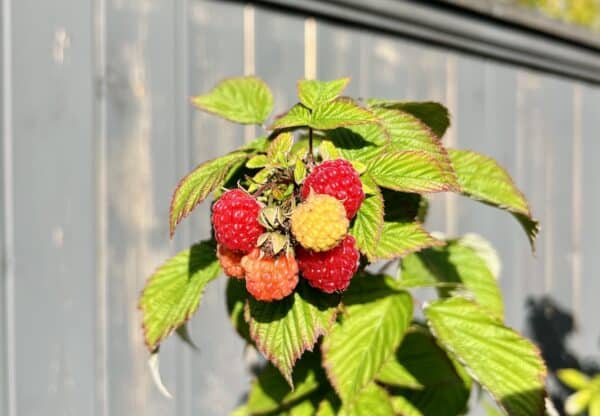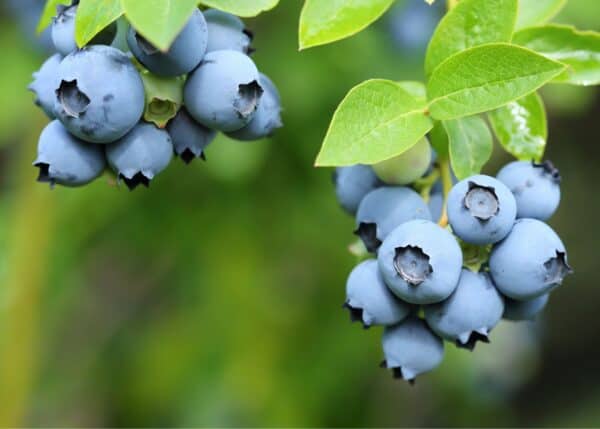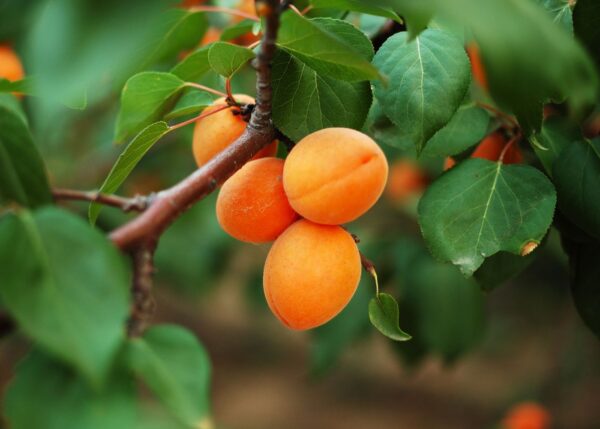The Cameo apple is an American bicolor cultivar with a thin yellow peel and red stripes. They have a subtly sweet flavor, rich creamy flesh, and a crisp texture. These juicy apples are known for their natural resistance to browning and their suitability for making applesauce and apple pie. The Cameo apple was discovered in 1987 by the Caudle family as a chance seedling in their Dryden, Washington orchard.
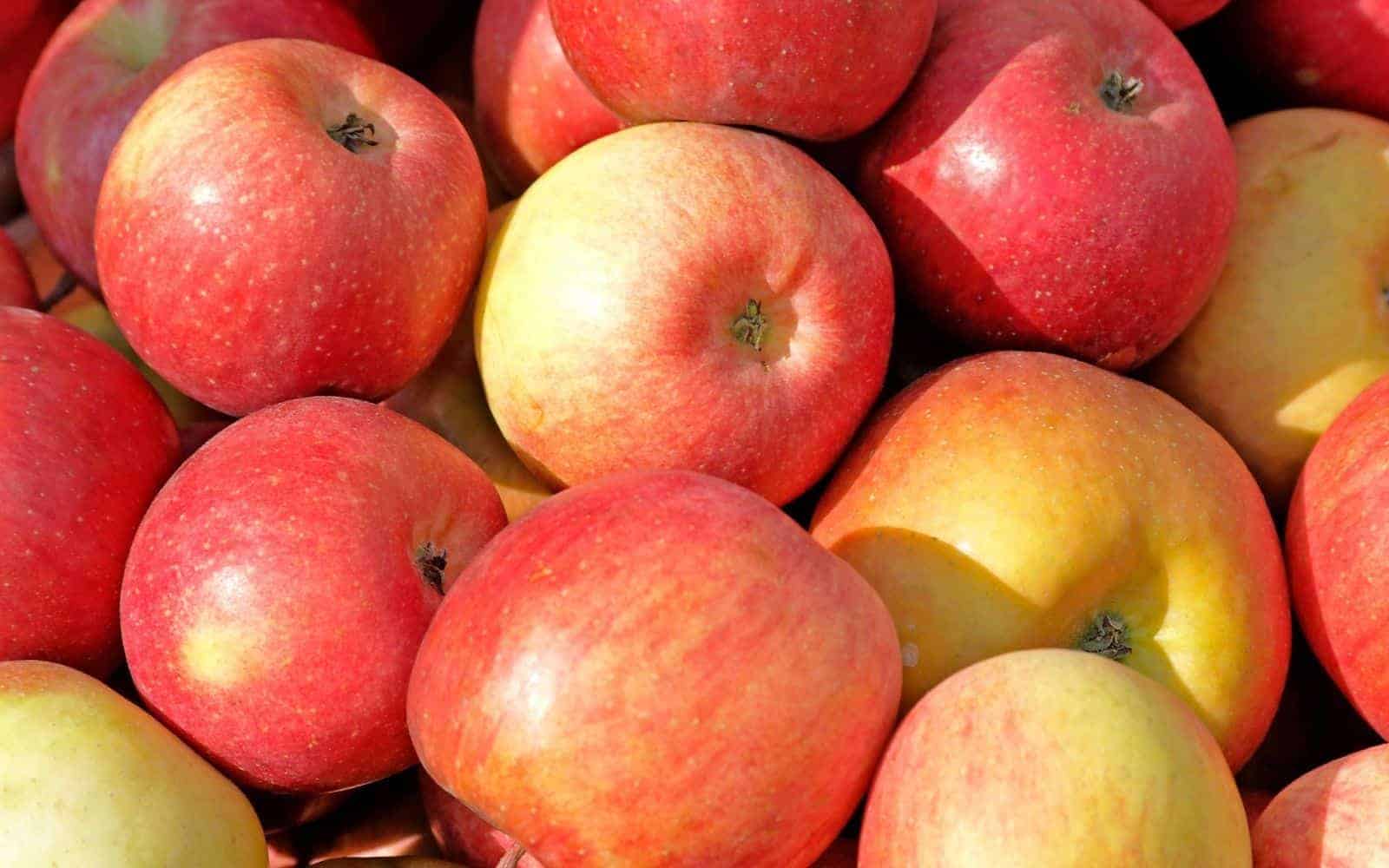
Cameo apple basics
Cameo apples were discovered in 1987 by the Caudle family in their Red Delicious orchard in Dryden, Washington. During the fall harvest season, they noticed that some of the apples that they were picking looked slightly different than expected. The family tasted the apples and enjoyed them, so they decided to go ahead and sell them to the public and grow more trees of the accidental apple variety.
Although the exact parentage that created the Cameo apple is not known, many people think that this variety is a combination of Red Delicious and Golden Delicious apples, especially because of the unique coloring that the Cameo Apple has.
Cameo apples are firm and crisp with a subtle sweet-tart balanced flavor. Cameo Apples are mainly an orange-yellow color, although red is streaked throughout the skin. The amount of red on the outside of a Cameo Apple changes with every apple that is picked, although you can always count on seeing some amount of red on the peel. The red peel color tends to develop more strongly when the fall weather includes warm sunny days but cold nights.
Cameo apples are medium-sized fruits. The apples also feature a long, slender stem and medium-sized lenticels with a unique color.
Cameo trees grow to be very tall. Semi-dwarf trees grow to be 12-18 feet tall, while standard rootstock trees grow to be 18-25 feet tall. The habit is similar to Golden Delicious in growth but with more spurs. Significant trimming is advised to maintain health and vigor.
Growing regions
Cameo apples were discovered in Washington and are now grown throughout the USA. Cameo trees are grown in Washington State, Oregon, Idaho, California, Michigan, New England, New York, North Carolina, and West Virginia.
Outside of the United States, a high volume of Cameo Apples are grown in orchards located in and around Kent, England. The Cameo is very popular in supermarkets around Britain, so many of the Cameo apples that are sold in Britain come from the orchards in Kent.
Growing your own tres
While Cameo was originally a club apple, its patent expired in 2013 and the trees are now available for sale and can be grown by backyard growers. While the trees aren’t as easy to find as some other cultivars, they are available from specialty tree companies.
Cameo apple trees are relatively easy to grow. The best time to plant a Cameo Apple tree is in the early spring or in the fall.
When you get your tree, plant it in a very sunny spot that has well-draining soil. You can add some fertilizer to the soil where you plan on planting the cameo apple tree if you would like to, but it is not necessary as long as the soil is rich in nutrients. Apple trees are generally not picky about the soil that they are planted in.
As your apple tree grows, make sure to prune it so it does not grow to be too large or too lush and full of branches. When you prune and how much you will remove will depend on the size of the area that the tree is growing in and your preferences.
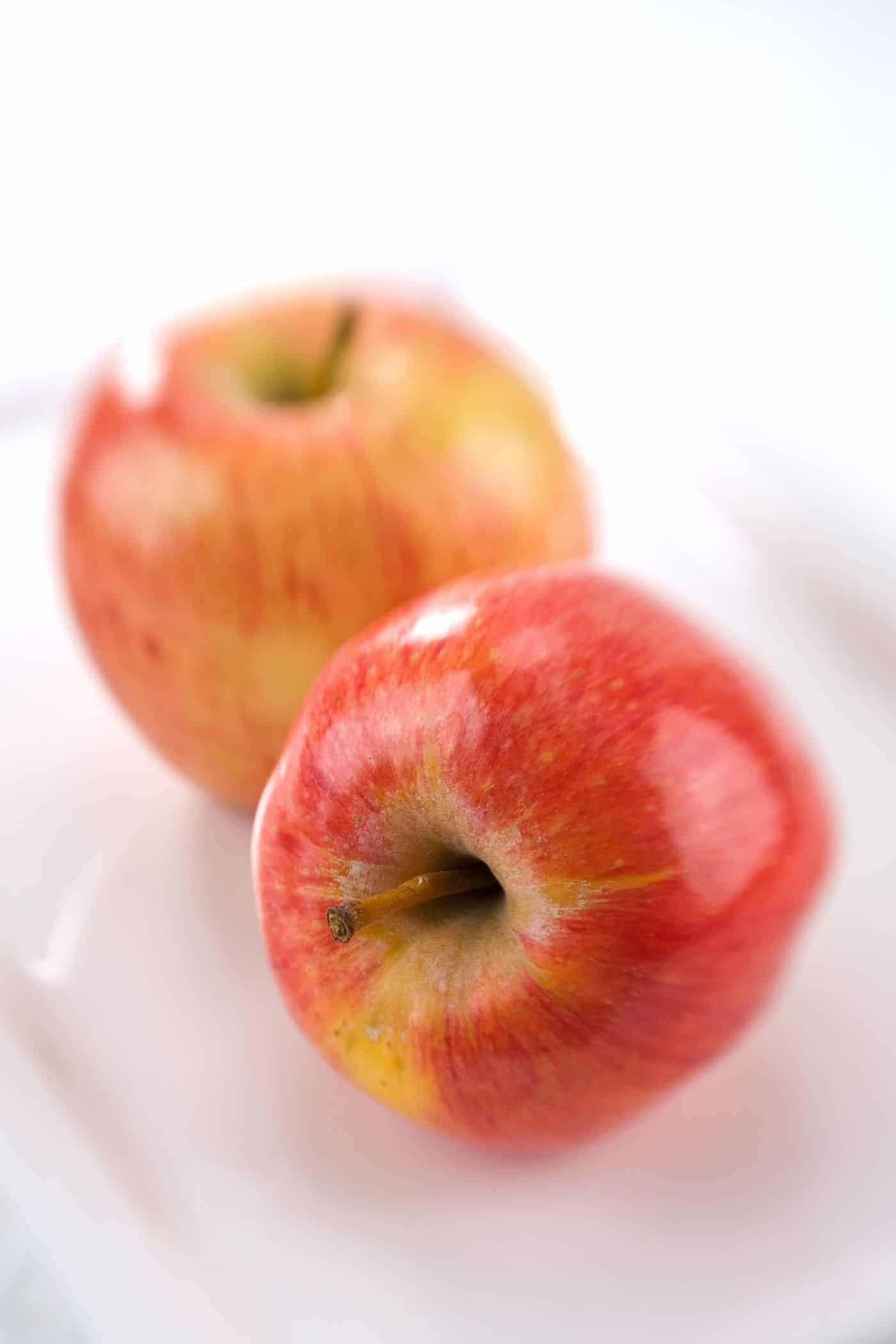
Harvest season
Cameo apples are harvested during the fall, typically in October. They are harvested along with many other apple varieties and have a very long harvesting season, so you can enjoy fresh Cameo apples for a very long time. The middle of the fall season is the perfect time to pick Cameo apples because they are nice and ripe and the weather is perfect for fruit harvesting.
These apples typically cost about $2 per pound. Local prices vary, and the exact price will vary depending on where you are, what season it currently is, and the price that your local grocery store has decided to charge for each pound that you purchase.
“After being highly promoted, Cameo has become a minor mainstream variety often found in the produce departments of supermarkets. The conical fruit is reminiscent of Red Delicious but with less-pronounced knobs on the blossom end.”
Apples of North America: Exceptional Varieties for Gardeners, Growers, and Cooks, by Tom Burford
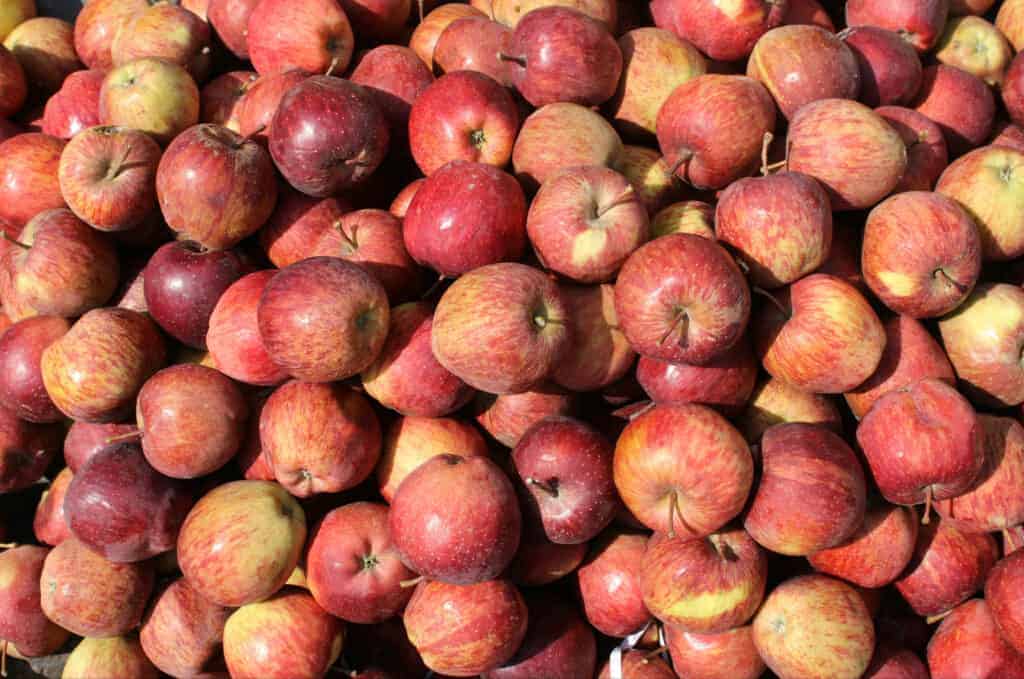
Storage
Cameo apples are considered a good storage apple. This variety can be stored for 3-5 months if they are kept in a cold, refrigerated area. If you keep the apples in 30-40-degree temperatures, they can be stored for even longer, although you should keep an eye out for signs that the apples are rotting or going bad. Cameo apples can be stored for over 6 months in commercial climate-controlled storage.
Using Cameo apples in cooking
Cameo apples are great to use in salads, baked goods, and various sauces. They have a slightly sweet and tart flavor, which makes them perfect for baking in the oven or stewing into applesauce or chutney on the stovetop. They are also quite delicious as a snack when they are eaten raw, fresh off of the apple tree.
Cameo apples are crisp and firm, which makes them great to use in pies. Use them on their own or blend the chunks of Cameo with a softer variety like McIntosh to create a nicely-texture pie filling with a sweet sauce and rustic apple chunks.
If you want to add Cameo apples to a healthy recipe like a salad, then you are in luck. They are great to use in salads because they do not brown very quickly, so you can eat a salad that has Cameo apples in it the next day without too much browning.
If you have a lot of people coming over to your home and are offering a charcuterie board, add a few slices of Cameo apple to the board. This will make the charcuterie board appeal to more people, and they will not likely brown during the party, so you can eat any leftover slices while you are cleaning up after the party! Sliced apples are also perfect for lunchboxes as they won’t likely brown too much before lunch.


